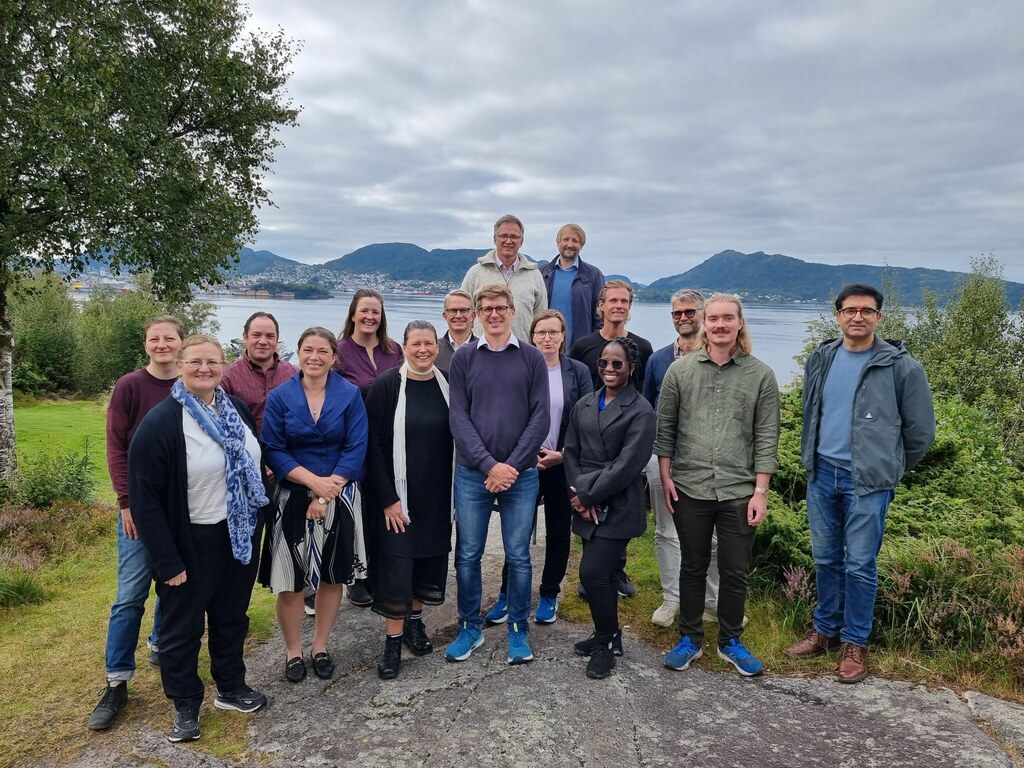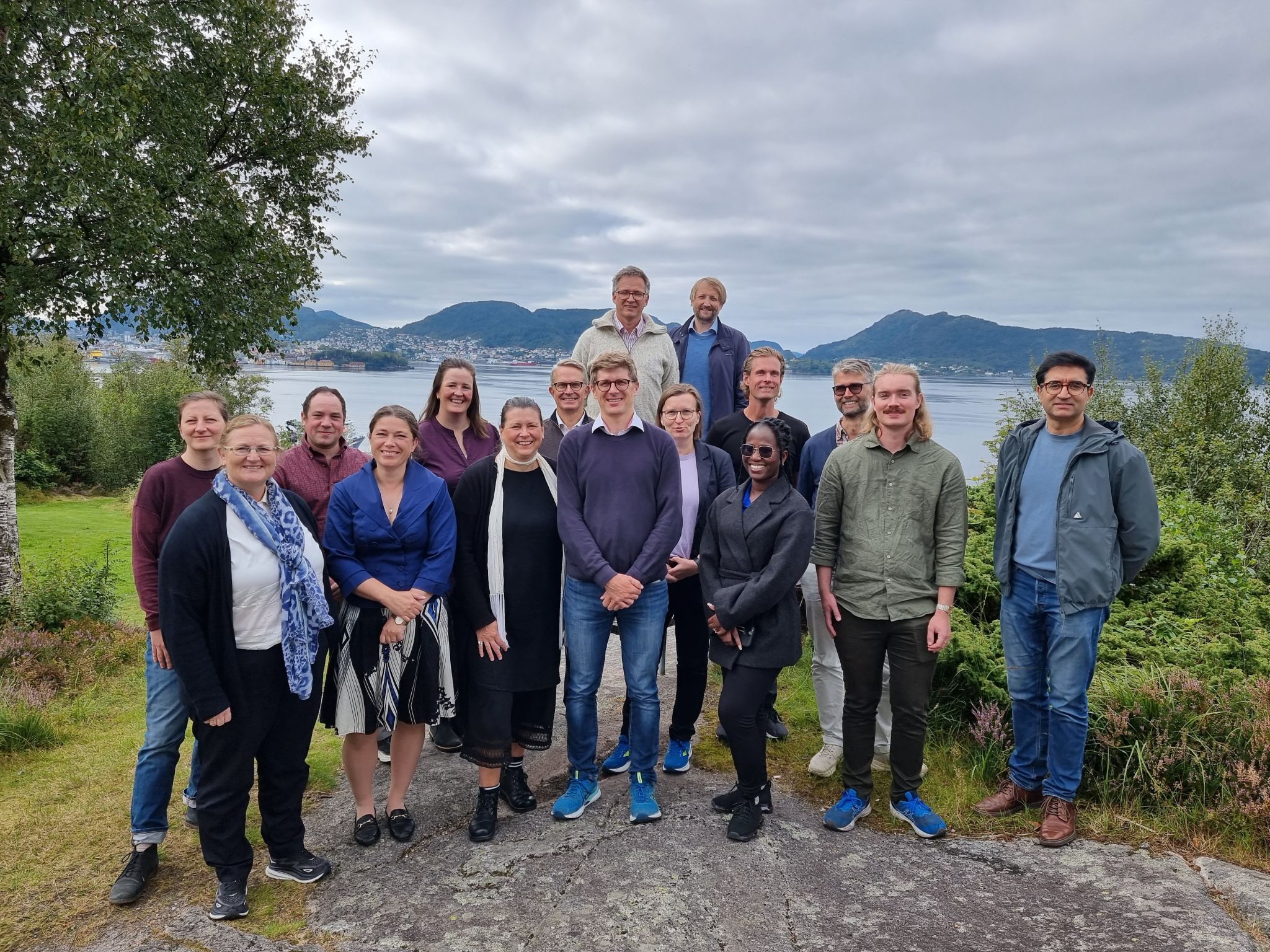
Cross-pollination between Nordic research projects
An important part of Nordic Energy Research's work is to facilitate knowledge exchange between researchers in the Nordic region. In August, two projects from different research programmes funded by Nordic…
An important part of Nordic Energy Research’s work is to facilitate knowledge exchange between researchers in the Nordic region. In August, two projects from different research programmes funded by Nordic Energy Research converged to exchange expertise on the future of maritime energy. By putting their heads together on complementary themes, the Nord_H2ub project from Nordic Hydrogen Valleys as Energy Hubs Programme and the Nordic Fire and Safety Network (NFSNergy) from the Nordic Energy Research Mobility Programme discussed technical possibilities, infrastructure, and fire safety aspects of renewable fuels such as ammonia, hydrogen, and methanol in the maritime sector.
We asked project leader of Nord_H2ub, Johannes Giehl, and his team as well as project leader of NFSNergy, Anne Dederichs, about their experiences of working together on the tranformation of energy and green shipping from their different perspectives.

The project teams of Nord_H2ub and NFSNergy in Bergen, Norway.
What are some best practices learned since Nord_H2ub and NFSNergy started?
“Renewable hydrogen remains central but mainly as synthetic fuels, with ammonia and methanol most relevant for shipping. The cross-border Nordic accelerates learning and harmonisation while leveraging each country’s strengths. The regulatory frameworks should address all zero-emission fuels now, with fuel-specific rules phased in later,” says Johannes on behalf of the whole Nord_H2ub project.
“NFSNergy has successfully brought together leading Nordic institutions in fire safety and risk assessment, leveraging each partner’s unique strengths. This has enabled a broad, interdisciplinary approach to fire safety in energy applications. Through regular workshops, summer schools, and researcher/PhD exchanges, the project has fostered knowledge sharing and critical mass in a field that is otherwise fragmented across the region. By aligning ongoing research activities with educational programmes, NFSNergy ensures that the latest findings are rapidly disseminated to both students and professionals. Life-long learning activities, such as webinars and workshops, have been effective in bridging the gap between academia and industry, ensuring that new technologies and research findings are implemented in practice,” says Anne.
How can your respective experiences add value to each other’s projects?
According to the Nord_H2ub team, their insights in linking hydrogen market development to socio-economic and regulatory challenges offer the opportunity to strengthen NFSNergy’s advisory role. NFSNergy, in turn, enhances credibility by embedding safety knowledge into infrastructure and hub assumptions.
NFSNergy also brings a strong focus on “safety hygiene” to Nord_H2ub, emphasising that safety must be integrated into all energy-related research and development to secure societal acceptance of green energy solutions.
“Our experience shows that neglecting safety can lead to accidents, erode public trust, and slow down the green transition. NFSNergy’s structured researcher and student exchanges, along with joint workshops, can help Nord_H2ub design effective mobility and collaboration mechanisms,” says Anne.
Importantly, several safety-related challenges identified during the project meeting could not be fully resolved on site, underlining the need for continued and strengthened collaboration through future joint initiatives to address these issues effectively. By facilitating ongoing knowledge exchange and partnership, NFSNergy can help ensure that innovation in green energy is both safe and widely accepted.
How does your collaboration boost the cooperation around hydrogen and energy in the Nordic region as a whole?
“Integrating safety, regulatory, and socio-economic perspectives from the start helps avoid bottlenecks later. Combining Nord_H2ub’s system modelling with NFSNergy’s expertise enables the design of secure and efficient hubs, ports, and logistics. Clean fuels bring clear climate benefits but also safety risks. Partnering with NFSNergy ensures Nordic energy systems are built on both innovation and leading safety standards, and with its maritime tradition, the Nordic region is well placed to lead in safe, scalable hydrogen value chains,” says the Nord_H2ub team.
“Nord_H2ub brings valuable expertise in hydrogen technologies and innovative green energy solutions, which significantly enriches NFSNergy’s work on safety in the energy transition. The collaboration has provided access to new research perspectives and practical challenges, especially in the handling of emerging energy carriers. Safety is a Nordic trademark – our region is known for integrating safety into innovation, and this collaboration strengthens that legacy. By working together, Nord_H2ub and NFSNergy can ensure that green energy solutions are not only technically advanced but also trusted and accepted by society,” says Anne.
The project partners also point out that their collaboration has revealed complex safety challenges in hydrogen and other green energy carriers that require deeper investigation. These unresolved issues highlight the need for continued cooperation in order to build a resilient and unified Nordic approach to safe and sustainable energy development.
